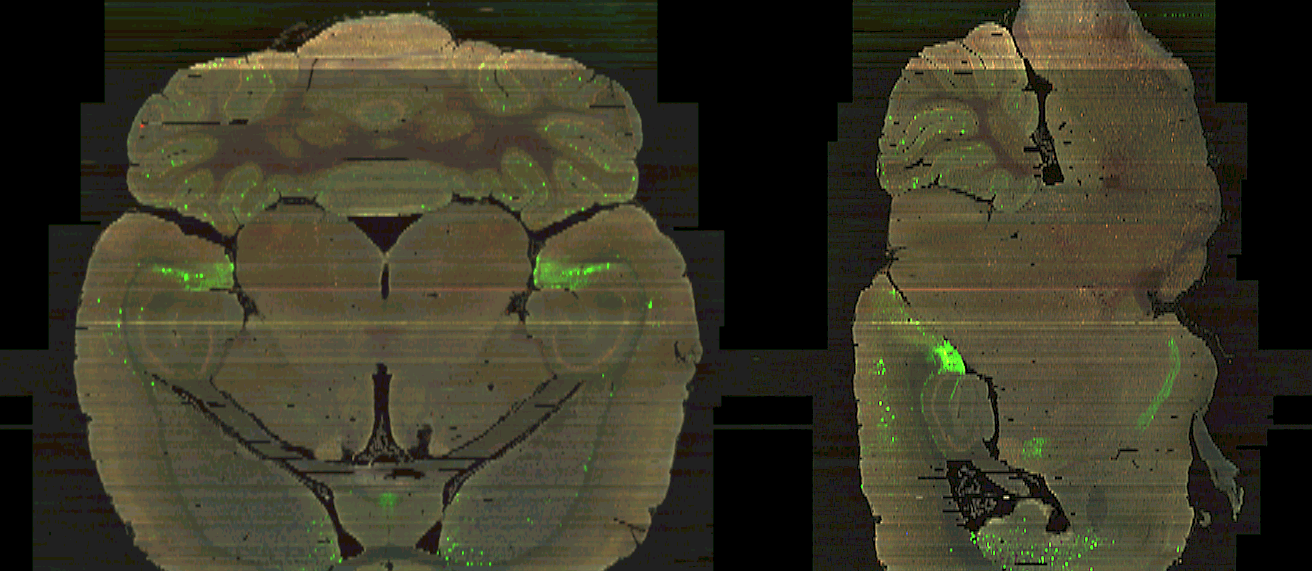White House neuroscience initiative funds research
Studies aim to understand different types of brain cells and how they work together
 Photo/Nelson Lab
Photo/Nelson Lab3D reconstruction of an enhancer trap brain
Professors Sacha Nelson and John Lisman ’66, the Zalman Abraham Kekst Chair in Neuroscience and Professor of Biology, were among the first researchers to receive funds from the National Institutes of Health (NIH) under President Barack Obama’s BRAIN (Brain Research through Advancing Innovative Neurotechnologies) Initiative.
The $100 million initiative is aimed at revolutionizing our understanding of the brain and neurological disorders such as Alzheimer’s, schizophrenia, autism, epilepsy and traumatic brain injury. Eve Marder ’69, the Victor and Gwendolyn Beinfield Professor of Neuroscience, is a member of the initiative’s advisory board, charged with defining the project and its goals.
Nelson and a team of collaborators at three other universities have won $3.4 million from the NIH to research how neuronal cell types evolved. Lisman’s team, led by Ivan Soltesz at the University of California Irvine, received $1.95 million to explore how brain cells work together to remember a sequence of events, like a route.
Nelson studies the brain’s cellular components. Researchers are still working to identify the thousands of different cell types in the human brain and the specific functions they perform. Each cell carries the same DNA but expresses different genes. How these cells differentiate — how they decide which genes to express — is a fundamental question in neuroscience.
To answer that question, Nelson and his team will examine cell types of two closely related species, mice and rats. Because mice and rats are so similar genetically, identifying the differences between cell types, including the genes they express, may shed light on how neuronal cell types evolved across mammals, including humans.
The thinking is that if researchers can understand how, say, cerebellar Purkinje neurons and its subtypes evolved to play a role in motor control and motor learning, they may be able to better identify how those neurons contribute to disease when they cannot perform those functions.
“We’re very excited to study how neuronal cell types evolve across mammals,” says Nelson. We hope that this work will make it easier to extrapolate from what we learn in mice and rats to our own much more complex brains.”
Lisman and his team are exploring how different cell types in the hippocampus, the seahorse-shaped region in the brain involved in memory and special navigation, learn and recall a sequence of events.
When someone asks you how to get to the nearest gas station, the different types of cells in the hippocampus kick into gear, making connections and working together to recall the route.
“Our team wants to determine exactly how this happens,” Lisman says. “If we are successful, this will be the first case where a cognitively important brain process can be explained in terms of identified cell types and their connections.”
By using cutting-edge technology, Lisman and his team will be able to observe this process in real time and build the first, full-scale model of the hippocampus. This model may shed light on neurodegenerative diseases that affect memory, such as Alzheimer’s.
Categories: Research, Science and Technology





